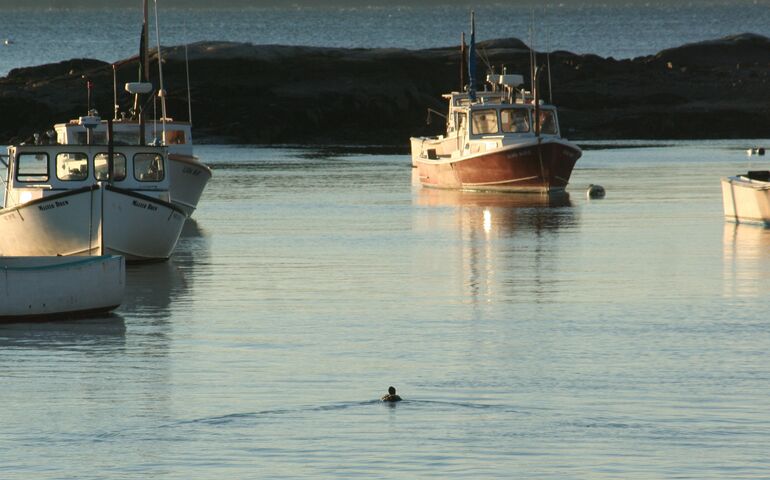Bill that would fund Maine lobster industry advances
 Photo / Laurie Schreiber
Maine’s lobster fishery and marine environment are among the focuses of funding through federal legislation that has passed the Senate Appropriations Committee.
Photo / Laurie Schreiber
Maine’s lobster fishery and marine environment are among the focuses of funding through federal legislation that has passed the Senate Appropriations Committee.
Federal legislation that supports Maine’s lobster industry and fisheries, as well as the National Sea Grant Program and other aquaculture research efforts, has passed the Senate Appropriations Committee.
U.S. Sen. Susan Collins, R-Maine, a senior member of the committee, said in a news release that it advanced the FY2020 Commerce, Justice, Science, and Related Agencies funding bill by a vote of 31-0.
“These investments will help us to better understand how the lobster stock is reacting to changing environmental conditions and ensure that Maine’s iconic industry that supports thousands of jobs continues to thrive,” Collins said.
“Additionally, this bill supports ongoing efforts to solve the conflicting conservation measures between American and Canadian fisheries and ensure that Maine lobstermen are not unfairly targeted by regulations intended to protect the fragile right whale population.”
The broad-reaching bill allocates a total of $73.33 billion, which is $9.15 billion more than last year’s funding level.
Among the provisions are some that may benefit Maine, including $2 million to support Gulf of Maine and Georges Bank lobster research priorities. The research will focus on overcoming reduced availability of herring for lobster bait and stock resilience in the face of environmental changes, including life history parameters, distribution and abundance, and species interactions, with the purpose of informing future management decisions.
The $2 million is part of an overall $75 million allocation for the National Sea Grant Program, which is $7 million more than last year’s funding level.
Right whale research
The bill includes $10 million for research related to the endangered North Atlantic right whale. That’s an increase of $2 million. The bill directs the National Oceanic and Atmospheric Administration to work with the Canadian government to reduce risks throughout its range.
Such efforts include, but are not limited to, continued collaboration on surveillance, cooperative research on the distribution of the whales and their food sources, and coordinated gear-marking efforts across jurisdictions.
The bill also urges NOAA to prioritize the development of long-term tagging methods for right whales, which would enable scientists to better track the whales’ location and distribution.
Additionally, the bill directs NOAA to fully evaluate the feasibility and economic implications of any management actions relating to the North Atlantic right whale and requires the agency to incorporate into its rulemaking recent research on the species’ primary food source, which has been shown to be decreasing in abundance in the eastern Gulf of Maine.
Additional provisions
• The bill directs NOAA to work with the Maine lobster fleet in FY2020 on implementing electronic monitoring and electronic reporting technologies to better track information that is currently collected through the use of human observers.
• The bill directs the NOAA to complete the 2020 herring assessment, which will help to address the lobster bait shortage issue in Maine.
• The bill encourages NOAA to work with Canadian and state fishery officials to develop a cooperative fisheries management plan for the gray zone, in order to mitigate conflict between U.S. and Canadian fishing fleets.
• The bill includes $76.5 million, an increase of $1 million, for Coastal Zone Management grants. For coastal communities and resources, the grants focus on protecting natural resources, managing development in high hazard areas, giving development priority to coastal-dependent uses, providing public access for recreation, prioritizing water dependent uses, and coordinating state and federal actions.
• The bill includes $38.5 million for Integrated Ocean Observing System Regional Observation. The system is a national-regional partnership working to provide new tools such as an extensive network of information-gathering buoys, and forecasts to improve navigational safety, enhance the economy and protect the environment.
• The bill includes $6.5 million for salmon restoration and recovery projects, and directs NOAA to ensure that adequate resources are provided to state agencies to implement the recovery strategy effectively.
• The bill includes $13 million, an increase of $1 million, for the Marine Aquaculture Program.













0 Comments